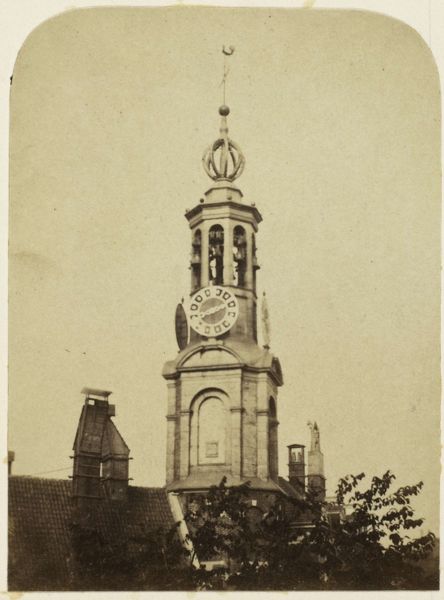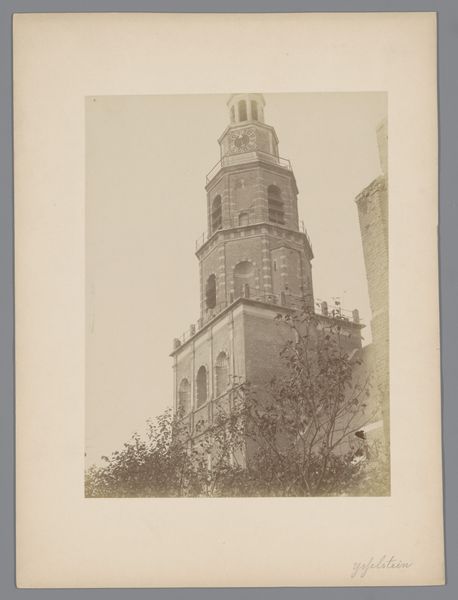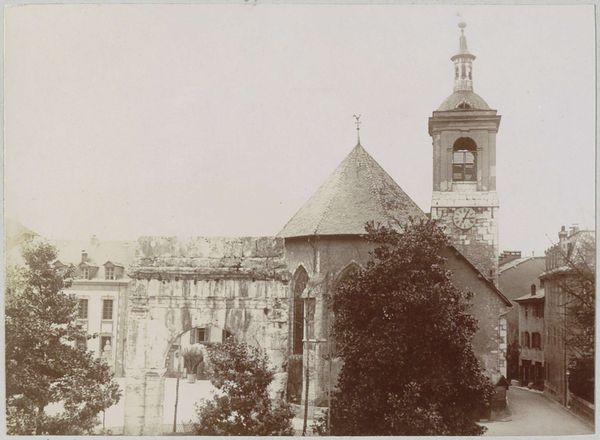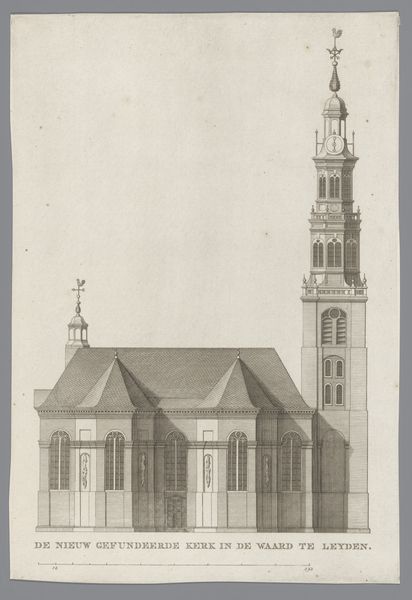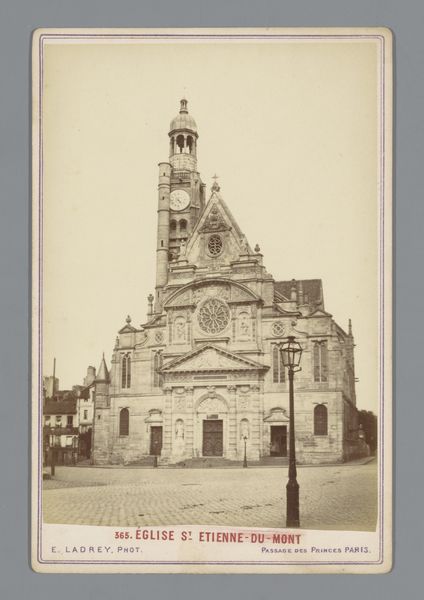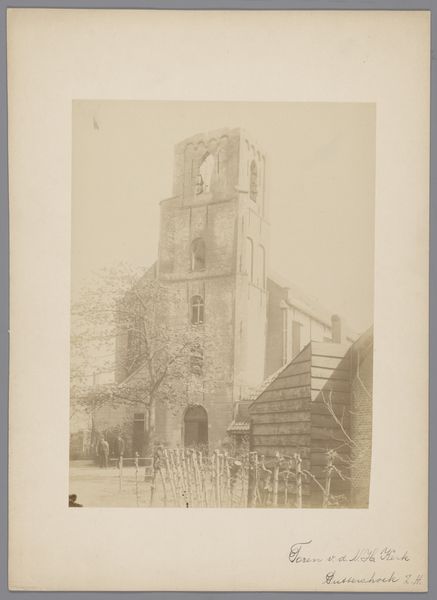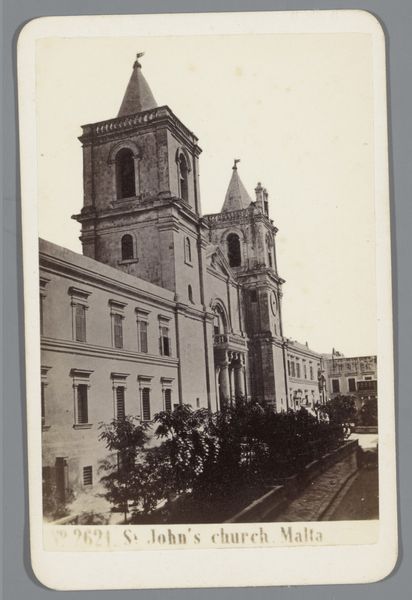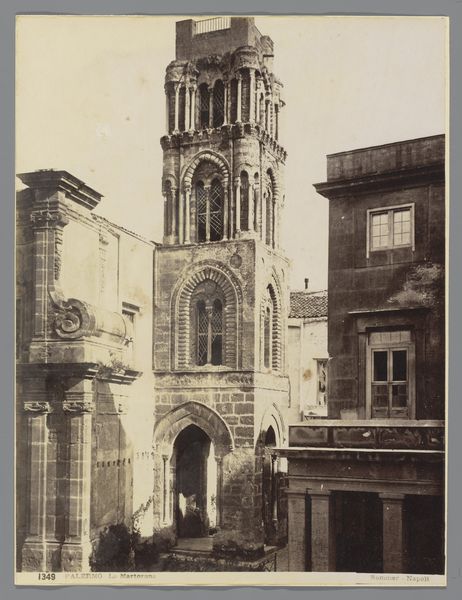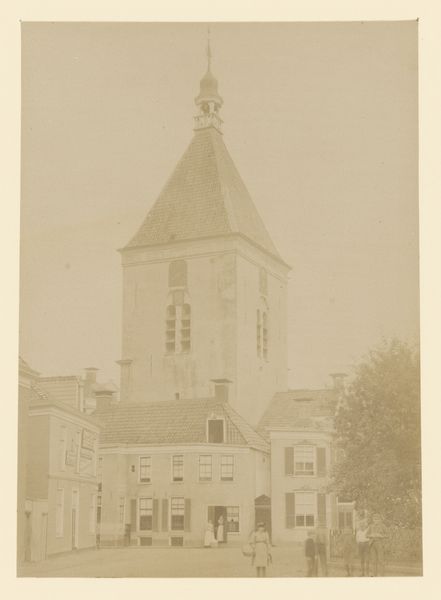
Gezicht vanuit het huis van de fotograaf op de Munttoren in Amsterdam 1852 - 1860
0:00
0:00
eduardisaacasser
Rijksmuseum
daguerreotype, photography
#
daguerreotype
#
photography
#
19th century
#
cityscape
Dimensions: height 104 mm, width 72 mm
Copyright: Rijks Museum: Open Domain
Curator: Gazing upwards in this beautifully subdued daguerreotype, we see Eduard Isaac Asser's "View from the Photographer's House on the Munttoren in Amsterdam," captured sometime between 1852 and 1860. Editor: It has a very serene quality, almost meditative. The composition is largely vertical, drawing the eye up, but there's a stillness created by the soft, muted tones. Curator: Absolutely. It's essential to remember the political climate of the Netherlands at that time. The burgeoning power of Amsterdam, seen here through one of its iconic structures, reflected both national pride and the complex socio-economic realities that influenced the daily lives of its inhabitants. Photography offered a democratization of art. Editor: That’s a crucial point. From a structural perspective, I’m intrigued by the tonal range and the textures achievable in a daguerreotype. The shadows and light really serve to emphasize the tower’s architectural details. Consider how Asser juxtaposes the solidity of the masonry against the more indistinct blur of the foliage. Curator: And what of the social context? It makes you think of Asser's position. A Jewish man living and working in a time of growing liberal reform but still facing persistent prejudice. Was his gaze an assertion of belonging, claiming his place within the city's landscape? Or, perhaps, was it merely just to test this medium as his occupation, despite the limited rights Jews had to owning certain types of businesses at the time. Editor: It also raises questions about the way we perceive historical time. The clock is prominent but frozen and the leaves have movement: stillness versus flux. Curator: These complexities are central to my understanding. A seemingly simple cityscape opens to many threads regarding identity, representation, and historical experience. Editor: Seeing the tower now through the lens of Asser allows me to understand it with added nuance, as something more complex than mere time. Curator: It's precisely through this interwoven approach—contextualizing historical narratives and understanding formal qualities that can show us the history of a location, society and identity—that we truly start to see an artwork's depth and true beauty.
Comments
No comments
Be the first to comment and join the conversation on the ultimate creative platform.
